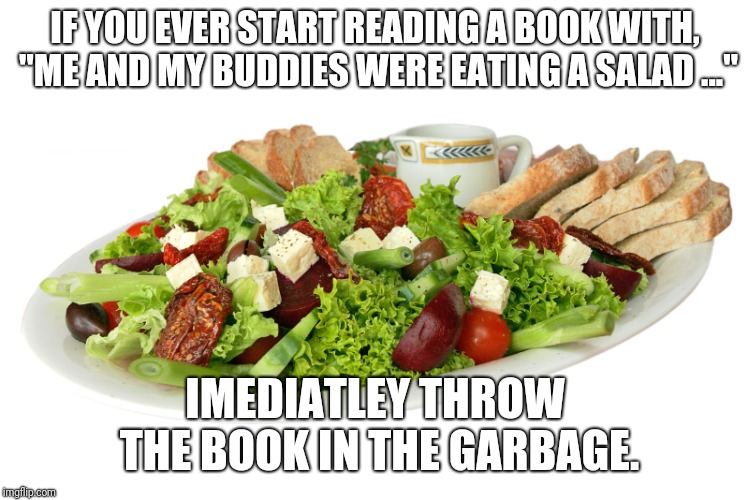Preparing a Salad as a Food Handler: What You Need to Know

Ever wondered why restaurant salad bars make me nervous?
Have you ever gotten sick from a salad? I have, and it’s not fun. Food poisoning from a Caesar salad is a special kind of betrayal – “I was trying to be healthy!”
While we all know raw chicken and lukewarm seafood are sketchy, many people don’t realize salads are actually high-risk foods. They’re full of raw ingredients that can harbor nasty bacteria like Salmonella, Listeria, and E. coli if not handled properly.
So whether you’re a professional food handler or just making lunch at home, here’s everything you need to know about keeping your salads safe (and your stomach happy).
The Ultimate Guide to Salad Safety (Without the Food Poisoning)
Part 1: Ingredient Selection and Storage

Choosing the Right Stuff
When you’re shopping for salad ingredients, quality matters more than you think.
- Buy from reputable sources – that sketchy roadside stand might have cheap tomatoes, but is it worth the risk?
- Look for pre-cut greens labeled “ready to eat” or “triple washed” if you want to skip some prep steps
- Choose fresh, undamaged vegetables without bruises or slimy spots
- Use pasteurized eggs and dairy for dressings (unless you enjoy gambling with Salmonella)
A study from the CDC found that leafy greens were responsible for 40% of food-borne illnesses from 1998-2008. Not to freak you out or anything.
Storage Solutions That Actually Work
Once you get those beautiful veggies home, proper storage is crucial:
- Keep prepared salads refrigerated at or below 4°C (39°F) to stop bacteria from having a party in your food
- Use airtight containers to avoid cross-contamination
- Store salad greens in plastic bags with a paper towel to absorb moisture
- Check “Use By” dates and don’t play the “it’s probably fine” game with expired products
- That mayo-based dressing? Keep it chilled at all times or prepare for consequences
Part 2: Preparation Practices That Won’t Make Anyone Sick

Personal Hygiene (The Unsexy But Important Part)
I know it seems obvious, but:
- Wash your hands thoroughly with warm water and soap for at least 20 seconds before touching any ingredients
- Avoid touching ready-to-eat foods with bare hands (use tongs or gloves)
- Keep your workspace clean and avoid touching your face, hair, or phone while prepping
- Clean clothes = cleaner food
The Right Way to Wash Your Veggies
There’s actually a science to this:
- Rinse under cold running water to remove dirt and bacteria
- Don’t use soap or detergent on your produce – it can actually be absorbed and make you sick
- Research from Colorado State University shows that plain water is just as effective as commercial produce washes
- For leafy greens, soak in cold water for about 15 minutes, then rinse again
- Dry with a clean salad spinner or paper towels to further reduce bacteria
The Equipment Factor
Your tools matter almost as much as your ingredients:
- Use separate cutting boards for raw meats and salad ingredients
- Clean and sanitize knives, cutting boards, and containers before and after use
- Don’t reuse the same cloth across different tasks (that’s basically bacteria transportation)
- Sanitize countertops before and after preparation
Part 3: Advanced Tips for Next-Level Salad Safety
Cross-Contamination: The Silent Killer
This is where most people mess up:
- Prepare salads away from raw meats or seafood
- Store salad ingredients on upper refrigerator shelves, above raw meats
- When shopping, pack salad greens separately from raw meats
- If you’re making a chicken salad, handle the cooked chicken with different utensils than you used when it was raw
Time and Temperature Control
The bacteria danger zone is real:
- Don’t leave prepared salads at room temperature for more than 2 hours (1 hour if it’s above 90°F/32°C outside)
- If you’re bringing salad to a picnic, The USDA recommends using ice packs and insulated containers
- Pre-chill ingredients before mixing for maximum freshness and safety
- If a salad has been sitting out at a buffet, just walk away. Not worth it.
The Truth About Bagged Salads
Those convenient pre-washed bags come with pros and cons:
- They undergo additional processing which can actually increase contamination risks
- The “ready to eat” label means they’ve been washed in chlorinated water
- If the bag says “triple-washed,” you don’t need to wash it again – you might actually introduce more bacteria by doing so
- But if you’re paranoid like me, a quick rinse never hurts
What I’ve Changed About My Own Salad Habits

After researching this topic, I’ve made some changes:
- I now keep a dedicated cutting board just for produce
- I’ve stopped leaving my salad bowl on the counter while I prep other dinner items
- I’m way more careful about expiration dates on packaged greens
- I’ve started using a salad spinner instead of paper towels (better for the environment too!)
The truth is, even thorough washing can’t eliminate all bacteria. But by following these steps, you’ll dramatically reduce your risk of getting sick from what should be one of the healthiest things you eat.
And if you’re wondering if all this effort is worth it – consider that The CDC estimates that 48 million people get sick from food-borne diseases each year in the US alone. Many of those cases could be prevented with better food handling.
So next time you’re making that delicious kale salad with goat cheese and walnuts, remember: a little caution goes a long way toward keeping your gut happy.

